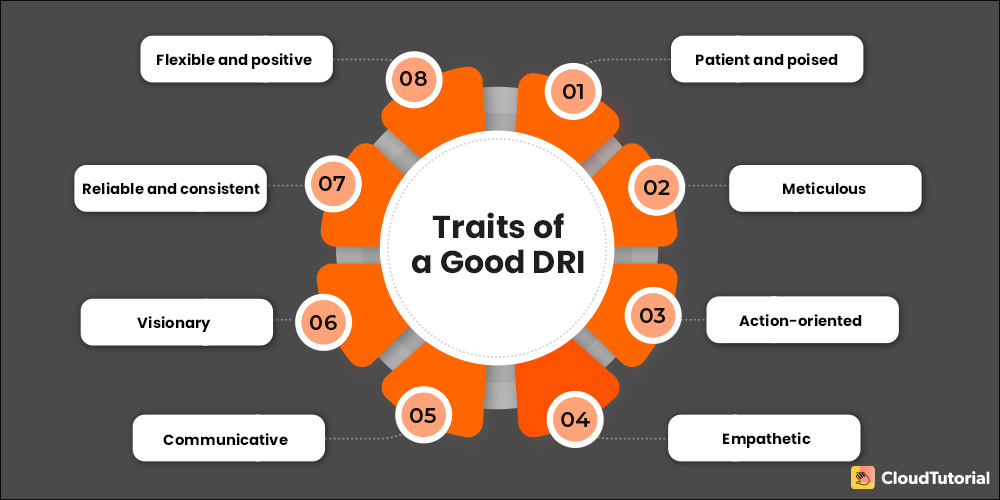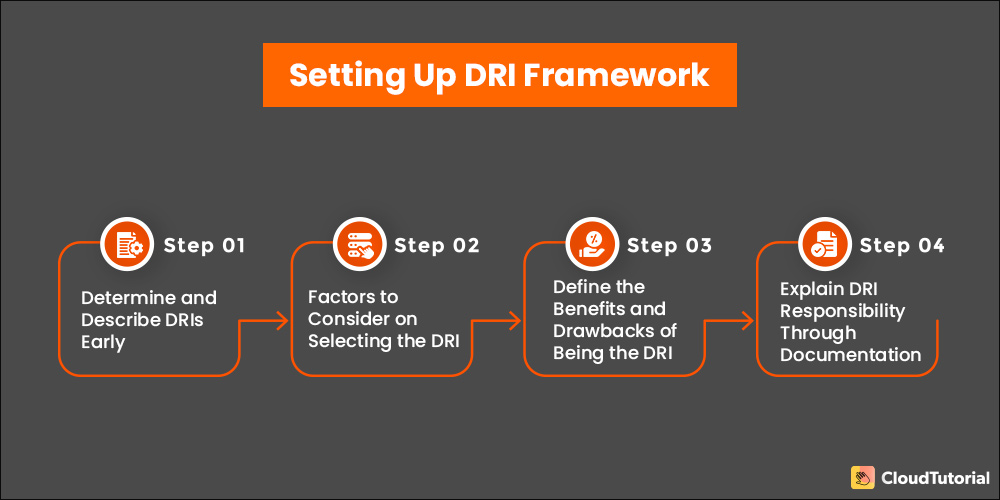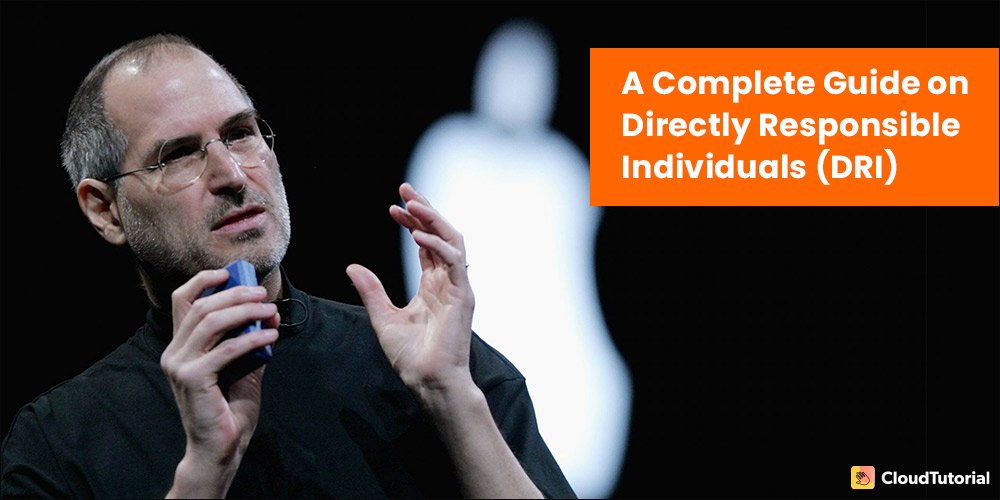Cultivating a company culture of responsibility within the teams is crucial for successful product management in the long run. The notion of the Directly Responsible Individual (DRI) is an essential element of the culture of innovative product development teams. But what is DRI? And how to adapt its model? Let’s dive into this concept through an easy guide.
Table of Content
What is a Directly Responsible Individual (DRI)?
Directly Responsible Individual (DRI) is a title that is given to a manager, team leader, or to an executive who is eventually responsible for getting the tasks done, making crucial decisions, and keeping the project on track.
Every project is given a designated DRI who is held responsible for the success or failure of that project. Such an individual would not be the only one working on their allocated project, but it is up to that individual to get the tasks done or find the required resources for it.
Who coined DRI? (Behind The Scenes)
The context behind this famous management technique is found in Steve Jobs’ principles. Apple’s Steve Jobs had a tendency of ensuring that every team member was responsible for each task on any agenda, thus, everyone knew who was accountable for that particular job.
Another aspect of Apple’s exceptional culture is that it permits teams to operate in a start-up culture by functioning within the big organization.
A former employee said, ‘Any effective meeting at Apple will have an action list. Next to each action item will be the DRI.’ A common phrase is heard around Apple when someone is trying to know the right contact on a project: ‘Who’s the DRI on that?’ (source)

Want to Improve Efficiency Within Teams?
CloudTutorial helps you create a Knowledge Base to share with your team as well as organization to work efficiently!
Why Does the Directly Responsible Individual Model (DRI) Work?
Delegating accountability through the DRI Model is critical for operating a successful team. This can result in the triumph and collapse of an important project. Here are the reasons stating why this model works:
- Reduces repetitive tasks: Having a designated DRI, who is in charge of the completion of the project, will permit several people to coordinate together and ensure that any task does not get repeated.
- Slashes down ambiguity and deferred responsibility: The primary reason affirming why allocating DRIs is a good procedure to follow is because it slashes down the ambiguity on ‘who is responsible for what.’ The bigger the team, the more likely are the people to put off the ownership.
- Scales-up decision-making process: Having a good DRI and decision-maker allows managers to stay away from being dragged into every email thread or meeting. This saves their time and speeds up the decision-making procedure.
- Saves time and money: When DRIs are well documented and defined, it is simpler to understand who should be included in an email thread, a chat, or a meeting. Communicating this way will save your time and money enormously.
What are the Characteristics of a Good DRI?

DRIs are held accountable at the task level or for an entire project or process. It does not matter whether a DRI is an introvert, extrovert, or ambivert. ‘Get Things Done’ is the only trait he or she must possess. Here are some recommended characteristics that make a DRI good:
- Patient and poised: Stays calm and patient under the stress of implementation or execution of tasks. He or she must have a balanced mindset when in a rush to meet deadlines.
- Meticulous: Pays attention to minute details and stays focused and organized by retaining a clear strategic perspective.
- Action-oriented: A DRI must be competent enough to adjust the direction of a task or project in clever ways to keep the team moving towards the set objectives.
- Empathetic: Listens to the team carefully and is empathic about their concerns. Also, DRIs must have the skill to ask relevant questions.
- Communicative: He or she must be able to interact at all levels – from senior to junior, within the organization effectively.
- Visionary: He or she must be proficient at foreseeing potential challenges and addressing them as soon as possible.
- Reliable and consistent: A DRI must show consistency and stay reliable for the actions that need to be taken in tricky situations.
- Flexible and positive: He or she must be resilient to get back from the setbacks.
- Inspirational and motivational: The DRI is also a member of the team and he or she has to make his or her team stay aligned and motivated on accomplishing the stages to get to success. Moreover, he or she must be in charge of ensuring that the team attains its set goals.
When to Use a DRI?
With DRIs allocated on everything – from main initiatives to bug statements, plenty of questions regarding ownership are answered. Following are a few examples depicting the usage of DRI:
- Projects that intersect into multiple departments typically encompass cross-functional teams. These teams have people involved from more than one function (for example, marketing and product, and sales and marketing) that require DRI.
- Long-term projects or a complex decision-making process requires DRI to keep the wheel rotating.
- An experiment on employing a new project or role requires DRI to eradicate any miscommunication.
- After new employees join the team, DRI can be their guiding light.
- Leaders are overburdened, a DRI can be a helping hand.

Want to share files within and across teams?
CloudTutorial KB software allows you to have a corporate wiki so you can find the data you need in seconds!
How to Set Up a Directly Responsible Individual (DRI) System in 4 steps?

Creating and encouraging the DRI system within these product teams is a useful method to enhance PM leverage and business productivity. Following are the steps that will help you build a great DRI system:
Determine and Describe DRIs Early
While starting a new project, it is advisable to select the DRI early. This should be done at the initial stage as it eliminates any vagueness on who is ultimately accountable for shifting everything forward in the project.
Also, knowing that every task would be executed and reported in a follow-up meeting is helpful. If not done, then such a meeting would prove to be a waste of time for everyone. In addition to this, they might waste more time taking follow-ups in email or chat.
Factors to Consider on Selecting the DRI
Choosing who a DRI must be on a project or particular task can be a tough job. Rationally, a DRI should be someone from the team who can complete the project successfully. It does not have to be the single person generally responsible for a task or a manager.
Confident, resilient, high attention to detail, action-driven, and communicative should be some of the traits in a good DRI. Such people that are responsible are essential to keep the project on track. They should be completely invested in their job and welcome teamwork in order to thrive and prosper.
Define the Benefits and Drawbacks of Being the DRI
Being responsible as a DRI has both gains and shortcomings. The advantages are that a DRI will be able to showcase their skills as a results-oriented and responsible individual while executing the project.
The drawbacks of being a DRI are that he or she may already be swamped with work and assigning accountability might feel like taking additional tasks. In the end, it is up to that individual to accept the DRI duties.
Explain DRI Responsibility Through Documentation
Having a principal repository of DRIs is essential to assisting a team grow. A corporate wiki is a perfect location to list responsibilities and roles. Here are the aspects to look into for having DRIs’ responsibility documentation:
- You have to list task owners’ names and a brief picture stating what they are answerable for in the project.
- If the wiki supports mentions, it is a clever idea to contain those too as it will be simpler for every team member to ascertain how to contact that team’s DRI.
- You may decide DRIs for certain tasks after every meeting and include that in your meeting minutes. Such notes should be issued in your internal documentation system and added to the explanation of the calendar invite for follow-up meetings.
Incorporating an internal knowledge base to create a list of DRIs, define responsibilities, and make access available to your teams would help everyone remember who was responsible for what.
A responsible individual is one who is able to make decisions consciously and pursue actions that seek to help others and improve oneself. Most significantly, this person accepts the outcomes of his or her decisions and actions.
Several efficacious agile software engineering teams adopt DevOps culture and are adding the job of Directly Responsible Individual (DRI) in their system.
The DRI concept of Apple works remarkably well. This is a simple tool that makes ownerships clear and points individuals with questions who are held accountable. This wipes out the ambiguity on which team member is responsible for what and smoothens the operations.
Selecting a Directly Responsible Individual and their exact role will differ based on their skills and the demands of the delegated task. What must be aimed while doing so that he or she is empowered to take crucial steps needed to complete the project successfully.
With CloudTutorial, set up a DRI model for FREE by documenting the DRIs list, their responsibilities, and sharing it with your team to boost their collaboration and productivity. So, start your FREE trial today and experience CloudTutorial’s main benefits.
Try it out before you decide.
Create a test article NOW!
Using this tool, all you have to do is add your first test article and see how it looks. Now, you don’t have to sign-up or login into CloudTutorial software just to check how your first article appears.

